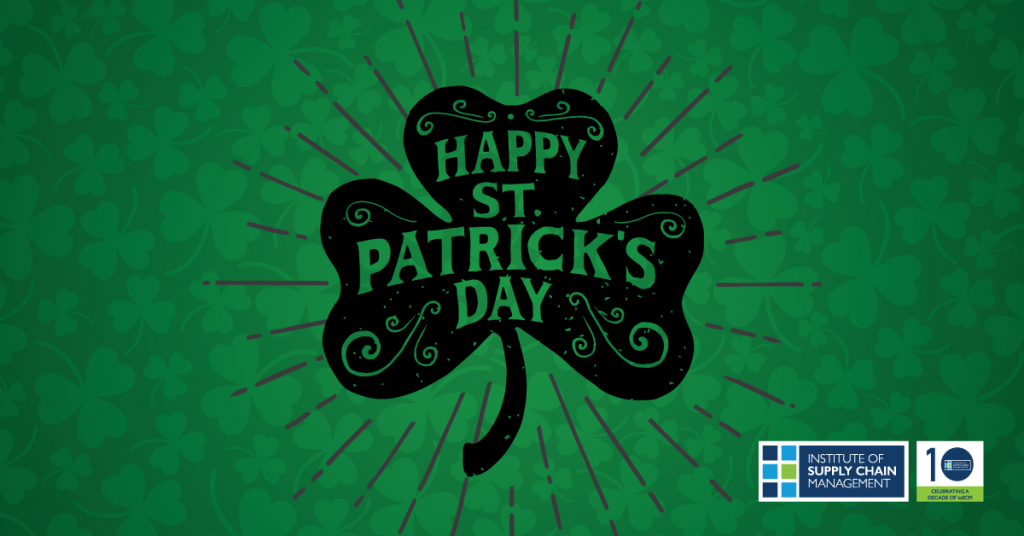
St. Patrick’s Day is an Irish celebration of Saint Patrick who was born at around the end of the fourth century. Born in Britain, at the age of 16 he was captured by raiders and sent to Ireland to work as a slave. Saint Patrick was credited with bringing Christianity to the Irish people during his time in Ireland. Leaving his mark by establishing many monasteries, churches, and schools throughout his lifetime. He died on 17th March, and on this day parades and celebrations are carried out all over the world in his memory.
Surprisingly, the St. Patrick’s Day celebration does not originate in Ireland. Historical records dating back to the 1600s have found that St. Patricks Day was initially celebrated in America and has only been celebrated in Ireland since the early 1900s. The first records show that St. Patricks Day was celebrated in Florida, and lead by an Irish vicar. 100 years later in Boston, some Irish soldiers serving in the English military were feeling homesick and marched through Boston to honour the patron saint. You can now celebrate St. Patrick’s Day in many countries including Australia, Singapore, Japan, India, Norway, and Spain.
On St. Patricks Day, no matter which country you are celebrating in, you will find parades, people head-to-toe in the colour green, music, and Guinness. Lots and lots of Guinness.
Why Do People Drink Guinness on St. Patrick’s Day?
Guinness was established in 1759 by Arthur Guinness, a philanthropist and brewer, who based his brewery in Dublin, Ireland. One third of all pints sold in Ireland are Guinness, making this beer Ireland’s most popular alcoholic drink. By association (as well as a lot of seasonal advertising) Guinness has become the most popular drink on St. Patrick’s Day.
The demand for Guinness dramatically increases in the run-up to St. Patrick’s Day. A whopping 13 million pints are drunk on St. Patrick’s Day alone. This is over 800% more than any other day of the year. This means that supply chains far and wide really have their work cut out for them.

Guinness’s Supply Chain Success
Although you may expect to see a shortage of Guinness in March due to the significant increase in demand, when St. Patricks day comes around, you’ll actually find there is more than enough Guinness to go around. This is because there are several steps taken within the supply chain to ensure enough Guinness reaches every pub and event ready for the celebration.
Forecasting
Forecasting is carried out to ensure the demand for Guinness over March is met. Essentially, forecasting is the prediction of sales for a certain period. This is done by utilising historical sales data from previous years for the same period. This is an essential step in ensuring there is enough product for demand. If the sales were underestimated, there would be a shortage of Guinness. If the sales are significantly overestimated, this could result in a storage issue for breweries, and could even lead to wastage.
Production
In preparation for the big celebration, Guinness ramp up their production to ensure they can cater for the expected demand. Overtime is available for brewery workers, which is very likely to play a big part in keeping up with demand.
Distribution
All the Guinness produced then needs to be transported to its final destination. Over 4.7 million miles are driven by beer delivery vehicles for St. Patrick’s Day. As Guinness is the most popular alcoholic drink to have on St. Patrick’s Day, they will contribute to this number more than any other beer. This means that Diageo, the company that own Guinness, will significantly increase the number of vehicles on the road distributing Guinness in the weeks leading up to March 17th.
St. Patrick’s Day is by far the busiest period for Guinness, the only other holiday which comes close in demand for Guinness is Christmas, and even then, it does not surpass the demand on St. Patrick’s Day. Every part of their supply chain adapts, and as demand starts to decline near the end of March all systems in place revert to pre-March levels. The adaptability of Guinness’s supply chain is a major contributor to their success. We applaud everyone involved in making sure no one misses out on their pint of gat!
5 facts you didn’t know about Guinness
We’d like to leave you with 5 interesting facts about Guinness that you can impress your friends with on St. Paddy’s Day:
* A pint of the black stuff is not actually black
If you look close enough, you’ll see that a pint of Guinness is not actually black. It is in fact a dark ruby red. Some of the barley used is roasted, which gives Guinness its distinctive colour.
* The official harp emblem of Ireland faces the opposite way because of Guinness
Guinness trademarked the harp as their emblem back in 1876. In 1922, the Irish government wanted to use harp as the official symbol of Ireland. Guinness would not agree to this, and it was therefore decided that the harp would face the opposite way to symbolise Ireland.
* The lease for the original Guinness brewery is 9000 years
In 1759, Arthur Guinness, the founder of Guinness, signed a 9000-year lease on the brewery at St. James’s Gate in Dublin. The original document can still be found in the Guinness Storehouse. The lease runs out if 10,759.
* Guinness is very popular in Africa
The drink is famous around the world and Guinness is one of the most popular beers in Africa, particularly line Nigeria, Cameroon, Kenya and Ghana.
* A Vegan-friendly beverage
Animal products were used as filtering agents up until 2018, when Guinness made their entire production process 100% vegan.

